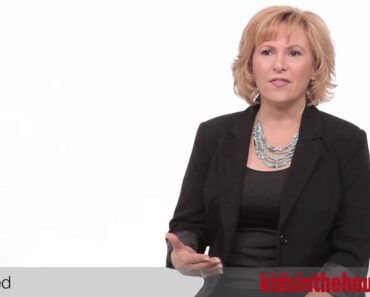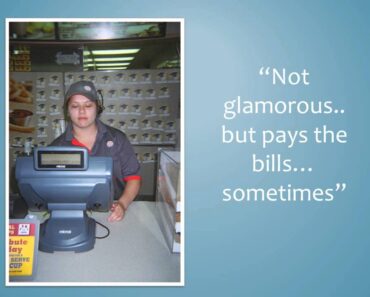
Positive reinforcement for children is a research-backed practice used to support and encourage children to use their skills and behavior (1). Learning often results from rewards and consequences or punishments (2). The practice of positive reinforcement focuses on appreciating the child’s good behavior rather than punishing for their mistakes. It is proven to be an effective behavior modification tactic for children and people across age groups and animals (3). This practice can promote consistent good behavior in children.
Read about the technique, its benefits, examples, and an exhaustive list of words you can add to your vocabulary for positive reinforcement in your children.
How Positive Reinforcement Works
Appreciating your child’s right behavior with appropriate rewards helps positively reinforce good behavior. Since undisciplined behavior is easier to notice, one should consciously focus on the child’s appropriate behavior while ignoring the inappropriate behavior for the desired results (4). You should pick a reward that your child would like, value, and enjoy.
It is a common misconception that if you give attention to or praise the child for their good deeds, they may begin to misbehave. However, research proves otherwise (4). The inappropriate behavior increases and strengthens by adults’ words, attention, and action.
Your words, gestures, and appreciation can help reinforce good behavior in your children. You may initially give a reward every time they do a good deed. Gradually, you may decrease rewarding every time to alternate times before moving to occasional rewarding and then stopping it entirely once the behavior becomes a habit (2).
Benefits Of Positive Reinforcement For Children
The following are the possible benefits of positive reinforcement for children.
1. Verbal affirmation works better
Children feel loved and noticed when they are appreciated for the small good things. Simple sentences such as “I love how you put your toys back on the shelf” can inspire the child to do things that would please you more. These sentences give them validation and a sense of self-worth. It also helps you build a stronger bond with your child (5).
2. Helps boost their self-confidence
Consequences and punishment can make your child think they are wrong. On the contrary, positive reinforcement boosts their self-esteem and self-belief. It makes them feel worthy and significant.
3. Supports character development
Positive reinforcement helps in character building as it has several long-term benefits. Trying to change your child’s behavior by instilling fear of punishments can put negative feelings even when they grow up. Getting rewards for their good deeds can make them responsible for an act.
4. Helps make behavioral choices
Parental approval and encouragement help children make correct decisions. It can improve the behavior parents are trying to reinforce and enable children to pick good over evil. The probability of getting applauded will push them to do right.
5. Stimulates internal motivation
Instead of thinking that they will be punished, the thoughts of getting rewards for good behavior stimulate intrinsic motivation in children. It reduces the need for parental monitoring of everything a child does and allows them to be responsible for making the right choices.
Types Of Reinforcers
Some common reinforcers depending on the situation and the child, are as follows (6):
- Natural reinforcers arise directly from the results attained with proper behavior. For example, a student who studies hard pays attention in class, asks questions, completes assignments in time, and scores well in examinations. Good scores act as natural reinforcers for the child to do better.
- Social reinforcers are mediated by teachers, coaches, parents, or other adults in the form of appreciation or approval for good behavior. Behavioral or verbal appreciation by people around can encourage children to behave well.
- Tangible reinforcers include rewarding money, gifts, toys, stickers, balloons, etc., or edibles such as candies and Jell-O. However, it is essential to monitor the use of these reinforcements as they can be unhealthy or set a wrong precedent.
- Token reinforcers are virtual points or credits. Children can be motivated to collect some points and exchange them for something they desire.
- Activity reinforcers could be practical and positive for children. On performing a good deed, you can reward them with additional time for the desired activity, such as playtime, computer time, swimming, and screen time.
Examples Of Positive Reinforcement
Apart from token reinforcers, activity reinforcers, and tangible reinforcers, you can positively reinforce a child’s behavior in the following ways (7). These are inexpensive or even free.
- Offering a simple smile
- Praising them
- Telling others about how proud you feel about your child, in the child’s presence
- Giving a high five
- Patting their back
- Giving a thumbs up to them
- Clapping for them
- Cheering them up
- Giving them a hug
- Having your special victory dance
- A star chart (can work well for younger children)
Examples Of Behaviors To Reinforce
The behaviors you would want to reinforce in our child may differ from family to family and are as follows (7):
- Good manners
- Playing quietly
- Waiting patiently
- Playing harmoniously with a sibling or a friend
- Co-operating with the parents’ requests and house rules
- Completing all chores
- Working hard to accomplish a difficult task
Frequently Asked Questions
- Are we judging our children based on their behavior?
Yes, not just the parents but society also judges children based on their behavior. Therefore, parents should reinforce the behavior that seems appropriate to them based on societal and moral expectations. It is how societies discipline their children, and children look up to parents, teachers, or other peers to get approval for their actions and behavior (4).
- Is positive reinforcement bribing?
No. Bribing is unethical and illegal. Reinforcement is appreciation, just like salary, appraisals or promotions (6).
- How should we deliver reinforcement?
For reinforcement to work, it should be immediate and consistent. Suppose immediate reinforcement is not possible, especially when the reinforcement is an object; you should tell the children immediately that you will be giving them the treat when you reach home. If you expect specific behavior from your child, you should reinforce any effort or improvement in that direction. Save the reinforcement only for the specific behavior you target, and do not make it ambiguous. Remember, it should be age-appropriate. For instance, it does no good or is ineffective by rewarding a science experiment kit for a baby or a sticker chart for a pre-teen (6).
- What is satiation and how to tackle it?
Satiation is a term used to describe when the reinforcer loses value and the child is no more excited about it. It is most familiar with edible reinforcers. Social, activity, and natural reinforcers are effective for a longer duration when compared to tangible and token reinforcers.
Some ways to tackle satiation are using a different reinforcer for different behavior, monitoring the amount of reinforcer, moving from constant to occasional reinforcement, etc.
Positive reinforcement for kids can make them disciplined, righteous, and confident in childhood and as they grow older. It will also improve the bond between the parent and the child. Once you begin to notice positive reinforcement results, you will feel that your home is a happier place. Moreover, as you get more involved in the practice, you will be a better parent. If all caregivers or family members follow a similar reinforcement pattern, the results could be sooner, and you will find that positive reinforcers work better than punishments.
Key Pointers
- Positive reinforcement for kids focuses on appreciating and encouraging good behavior instead of punishing or scolding them for their bad behavior.
- Remain consistent unrewarding a child’s behavior to yield the best results.
- Natural, social, and activity reinforcers are better than token or tangible reinforcers in the longer run.
References:


































